
views
Rolling Up Your Rug

Determine the direction of the rug pile. Look at your rug’s fibers, also called the pile. Run your hands over them lightly and feel which direction the majority of them run in. This will help you get a tighter, smaller roll and keep the final shipping costs to a minimum. Some small sections of the pile may run in the opposite direction. This is completely normal and shouldn’t affect how you roll your rug. Just pay attention to the direction that the majority of the fibers lean.

Lay a cotton sheet or acid-free paper across the pile. Acid-free paper will prevent the rug from getting hot or “sweating,” which attracts moths. To achieve the same effect with a cotton sheet, spread a polyurethane wrap over the cotton, taping it tightly at the ends of the sheet. Secure the paper or sheet with cotton or polyester twill tape, which you can find at craft stores. Leave an additional 2 feet (0.61 m) of paper or sheet along the width of the rug. If you use polyurethane on sheet, wash the sheet well before using again. Avoid using plastic to roll your rug. Plastic prevents the rug from breathing and can attract moths or other small insects that can damage your carpet.
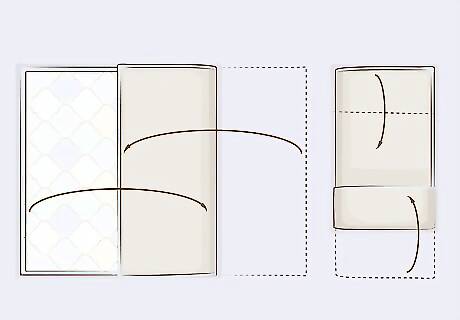
Fold your rug into thirds. Grab one corner of your rug and draw it in towards the center, about a third of the way across the rug. Do the same with the other side so that your rug is folded into 3 layers. Then, fold the top and bottom of the rug towards the middle so that the tasseled ends are facing each other but not touching. Throughout the folding process, let the rug fall where it wants to. Stop folding right away if you hear any cracking or popping. A good fold will ensure a tighter roll for your rug and easier shipping.
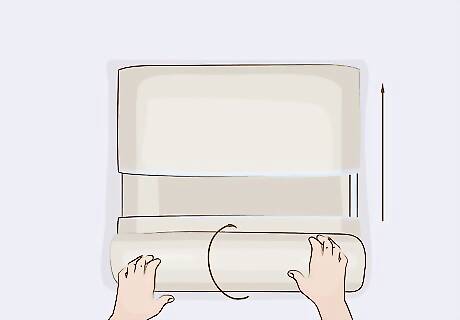
Roll up your rug. Start at the bottom portion you just folded over. Roll up your rug into a tight cylinder, going against the grain if you can. Wrap the extra 2 feet (0.61 m) of paper or cotton around the outside of the roll. For the straightest roll, lay a rod or wooden dowel along the length of the rug and roll around it.
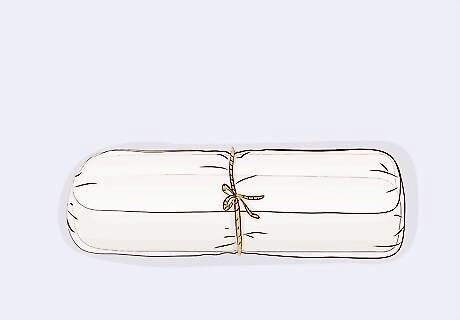
Tie twine around the center to hold your rug in place. For added security, tie a piece near the top and bottom of the roll as well. You can also use a strong thread.
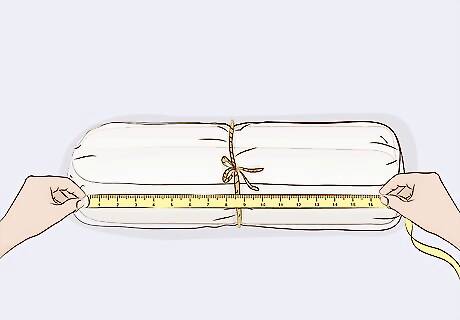
Measure and weigh your rolled rug. Use a tape measure to find the length, width, height, and diameter. Add 3 to 4 inches (7.6 to 10.2 cm) of extra length and width to your measurements to compensate for the size of packaging materials. Stand on a scale with the rug and note the weight. Subtract your own weight from it to get the weight of the rug by itself. For example, if you and the rug together weigh 150 pounds (68 kg), but you only weigh 135 pounds (61 kg), then the rug weighs 15 pounds (6.8 kg). You can also roughly estimate your rug’s weight by calculating ¾ pound per square foot (340 grams per .09 square meters). Having these measurements will help you when you start talking to shipping companies and determining what kind of packaging you’ll need.
Packing a Rolled-Up Rug

Add some cotton padding on the ends. Rugs may be dragged during transport, so it’s good to pad the ends a bit to prevent damage. Tape the extra padding with blue painter’s tape to keep it secure during transport. Avoid using newspaper to pad your rug, since newsprint can bleed into the fibers if it gets wet.

Slide your rug into a plastic sleeve. An extra layer of plastic will protect the rug until it gets to its destination. Tuck a few mothballs or moth crystals into the rolled rug to discourage insect pests, then tape down the plastic with blue painters tape.

Place the rug in your shipping container. Shipping companies recommend sending rolled fabrics in corrugated boxes for the best protection, which you can find at shipping and packaging stores as well as at the post office. If you’re using a shipping company that specializes in rugs and fabrics, they can recommend the best kind of container to use. If you’re buying a box and shipping it yourself, make sure the box fits the dimensions of your rug before you buy.

Call a shipping company. Ask friends or family members to suggest shipping companies they’ve used to ship rugs or other textiles. Visit a local rug or carpet retailer and ask them if they can recommend a shipper they use. You can also check online for reviews of potential shippers. Look for companies that give written estimates, have verified credentials, will insure your package, and don’t require a deposit that’s over 20% of the total cost of the package.
Cleaning Your Rug Beforehand

Check your carpet’s labels for any special cleaning instructions. Most area rugs can be cleaned with the same basic procedure, but it’s good to check the rug’s tag or care instructions for any specific cleaning products to avoid. Especially check on rugs that are: woven or braided; handmade, antique, or oriental; or made of natural fibers like grass, fur, or sheepskin.

Take fragile rugs to a professional cleaning service. If you have any doubts about cleaning your rug, call a local, professional carpet cleaning service. You can either ask for advice on how you can clean the carpet yourself, or pay for them to do a deep cleaning.
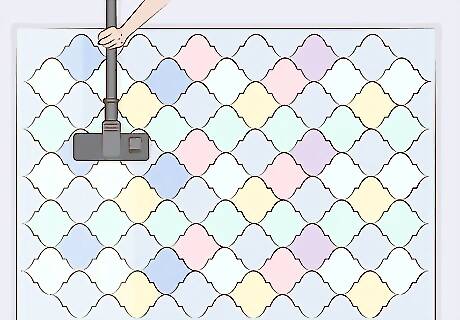
Vacuum your rug to remove dust. On a typical area rug, the regular powerhead should work fine. If you’re not sure, check your rug’s label or care instructions, or use the small brush attachment. If your rug is reversible, vacuum on both sides, avoiding any tassels that could get caught.
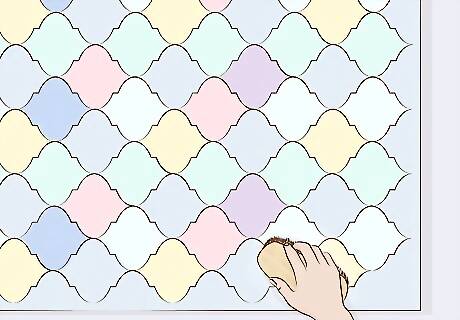
Brush or shake out any leftover dust. Use a stiff brush to remove any pet hair caught in your rug, brushing in the direction of the fibers. If your rug is small enough, take it outside and shake it to remove any last pieces of dust or dirt.

Test your carpet cleaning solution. Buy a rug cleaner specific to your rug’s material. Use a sponge to rub the cleaner on a small corner of your rug and mix in a bit of water. Let it sit for a few hours before rinsing it off, then look carefully to make sure that there’s no color or fiber damage. Avoid using hot water in your cleaning solution, as it could shrink your rug’s fibers or cause its colors to fade.

Take your rug outside and wash it with the cleaner. When you’ve made sure your cleaner is safe to use on your rug, use a sponge to lather it deep into the rug. It’s best to do this in the backyard to avoid any splashes or spills. Let the solution sink into the rug for as long as indicated in the cleaner’s instructions. Check the weather forecast before you clean your rug to make sure you won’t be interrupted by rain. You ideally want 3-4 days without rain, to give your rug time to dry outside.
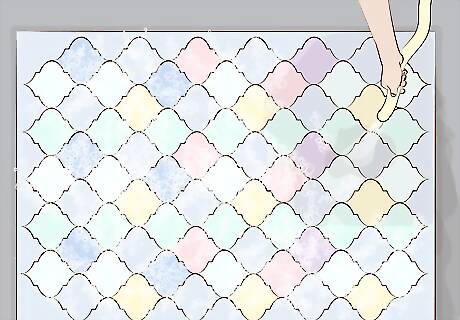
Rinse your rug thoroughly with a garden hose and let it dry. Make sure you completely hose off all the suds. Run a squeegee over the wet rug to remove excess water and wring it out as much as you can. Let it sit outside and air dry until you can squeeze it hard without feeling any wetness. The drying process may take more than a day or two, so be patient. It will be worth it when you have a clean rug at the end! If the forecast changes and predicts rain before your rug is dry, simply move it to the driest, sunniest room in your house and let it sit until dry.
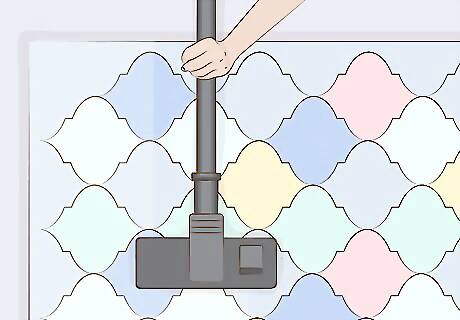
Vacuum one more time to straighten the fibers. Now that your rug is clean and dry, give it on last vacuuming. This will neaten up the fibers, which are probably bent a bit strangely from the washing.




















Comments
0 comment